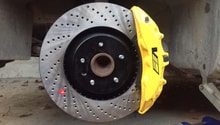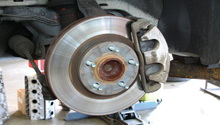Camaro and Firebird: Brakes Diagnostics Guide
You're out one day and realize the brakes don't feel like they used to. You start wondering what could be going on with your 4th Gen. It still stops okay, but it just doesn't feel like it should. Don't cause an accident because you didn't bother figuring out what was going on. Spend a little time now, instead of a lot of money later.
This article applies to the Camaro and Firebird (1993-2002).
The braking system in your 4th Gen F-Body does a pretty good job of stopping your car when it's working correctly. Figuring out what is going on will help you to keep your car on the road and not in a ditch or wrapped around a tree. Be mindful of those around you and your passengers, and always remember to think of safety first. Getting to 100 mph is the easy part, bringing it down from that speed is much more dangerous, especially with a braking issue. Read on to find out common issues, and what you might be able to do to fix them.

Materials Needed
- Basic tool set
- Jack and jack stands
- Flashlight
- Clean rag
- Fresh (unopened) bottle of brake fluid
Step 1 – Check fluid in master cylinder
The fluid in the master cylinder might be old.
If it has been a long time since you've changed the fluid in your brake system, the fluid could be a dark amber or green color. The fluid should be of a light viscosity, too; thinner than motor oil, but can thicken and gell over time, and cause all sorts of issues. The longer it's been since it has been flushed, the darker the fluid will be. This is because normal brake fluid is hydroscopic, meaning it absorbs water. When it has absorbed a lot of water, it won't stand up to heat as well, which can cause brake fade after just a few stops from freeway speeds.
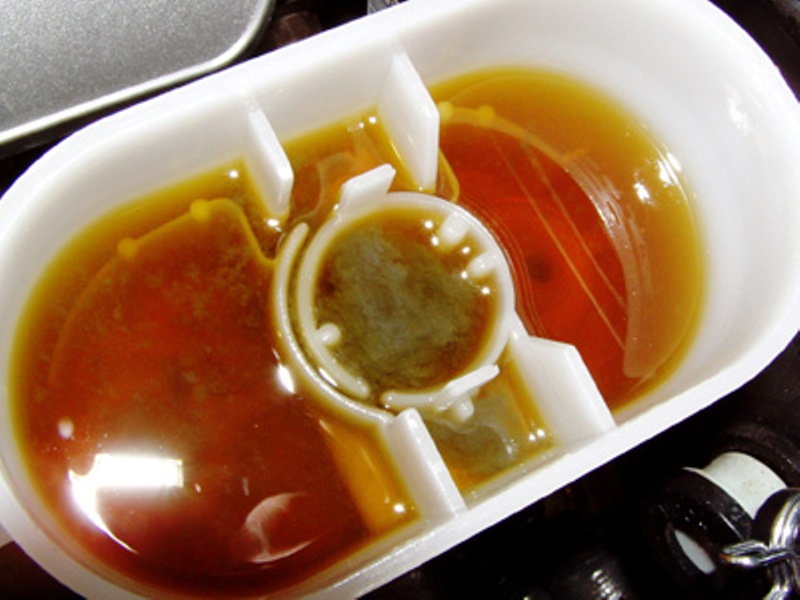
- Pop the hood.
- Clean the reservoir cap with a clean rag.
- Remove the cap and check both the level and the color.
- If the fluid is a dark amber to dark green color, it's time to flush it.
- Low fluid could indicate a leak, or it may just indicate the pads are worn down.
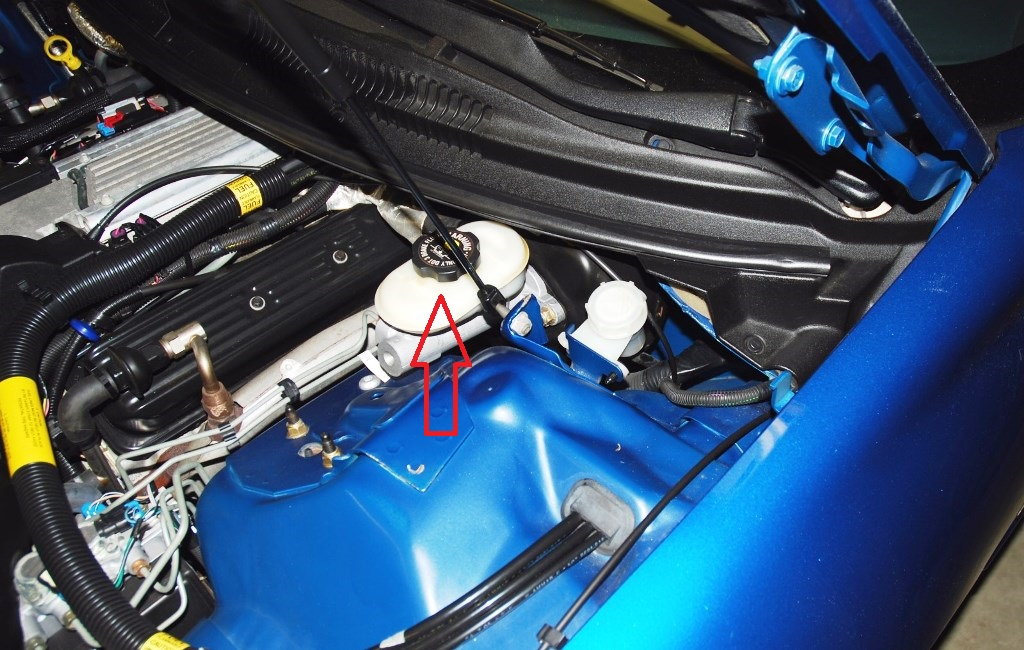
Pro Tip
Most manuals suggest flushing the entire braking system with fresh fluid every other year. This is also a good time to change to better quality fluid with a higher boiling point
Step 2 – Brake pads
The brakes may be worn thin.
There is the metal tab on the front brake pads that will make a loud squealing noise when the pads get too thin and will (usually) stop making the noise when you step on the brakes. When you hear the noise, don't panic, you still usually have hundreds of miles left, but the pads are about 75% worn. This is a great thing if the brakes wear evenly, but some times they don't. It doesn't hurt to take a look periodically at all of the brake pads on your car.
- Apply the emergency brake.
- Jack up one wheel and support it with a jack stand.
- Remove the wheel.
- Look at the brake pads inside and outside for how much pad is left.
- If the pad is less than 1mm, they absolutely need replacing. If getting anywhere near this, consider replacing them anyway.
- Also, look to ensure there is even wear on each pad. If the pad is worn at an angle, or only one pad on a caliper is worn, the caliper might be sticking.
- Inspect all four wheels.

Pro Tip
Quite often the brake pad on the piston side will wear faster than the outer pad. If the caliper is not sliding as it should, this will the difference to be more pronounced.
If the fluid is low but the pads are fine, go to Step 3.
Step 3 – Low brake fluid
The master cylinder may just be low or the brake system might be leaking.
As discovered in Step 2, your brake fluid may be low due to excess wear on the brake pads. Refilling the master cylinder in this case would not be good, because when the brake pads are changed and the calipers compressed, all of the brake fluid would go back into the reservoir. If you've refilled it prior, it will run out of the master cylinder and all over the inside of your engine bay, possibly ruining your paint. If the brake pads are good and the master cylinder is low, you may have a leak. There are three main places where there might be a leak: rubber hoses, caliper piston seal, or rear of the master cylinder. It may leak elsewhere, but these are the main problem areas as a car gets older.
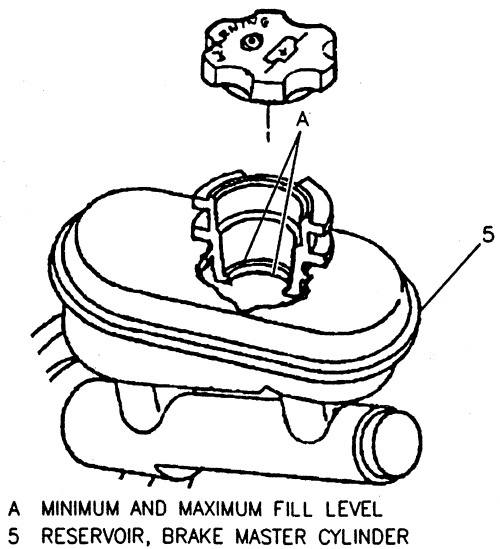
- Inspect all the rubber lines at the calipers (one on each wheel) for leakage.
- Inspect each caliper for leakage.
- Inspect rubber lines at the rear differential for leakage. If your car is equipped with ABS, there are two rubber brake lines coming off the body going to the rear axle. If it doesn't have ABS, you'll usually find only one rubber line there.
- If no leakage is found, pull the master cylinder off by removing the two nuts, one on either side. Inspect the back of the master cylinder where the push rod would press against the piston to see if there is any fluid present. If present, replacement of both the master cylinder and vacuum diaphragm is probably needed.
- If no leakage is found anywhere, fill the reservoir up to full and check the level periodically.
Step 4 – Pedal vibration
The rotors may be warped, a wheel or caliper may be loose, a tie rod could be bad, or various other reasons.
If when you step on the brakes you feel a vibration, especially after hard or long braking, your rotors may be warped. But that is not the only reason for this symptom. If the shimmy and shake happens even when the brakes are cold, it could also be from bad brake pads, a buildup of pad material in one spot on the rotor, something could be loose, or the suspension could be worn. Jack up the front end to check that everything is tight and the wheels can't move side to side, or up and down, because of bad bushings or bearings. Check ball joints and tie rods for excessive play. You may be forced in the end to seek out professional help from an alignment shop if the cause is not obvious.
Related Discussions
- Brake Issues - LS1Tech.com
- Rear Brake Pad Change - Issues with Parking Brake? - LS1Tech.com
- LT1 Parking Brake Issues - LS1Tech.com
- 4th Gen. Fix for ABS Inop, Low Trac, and Brake Lights - LS1Tech.com

